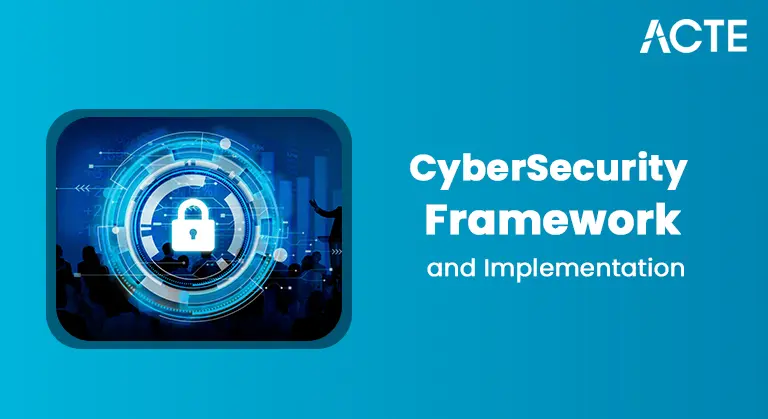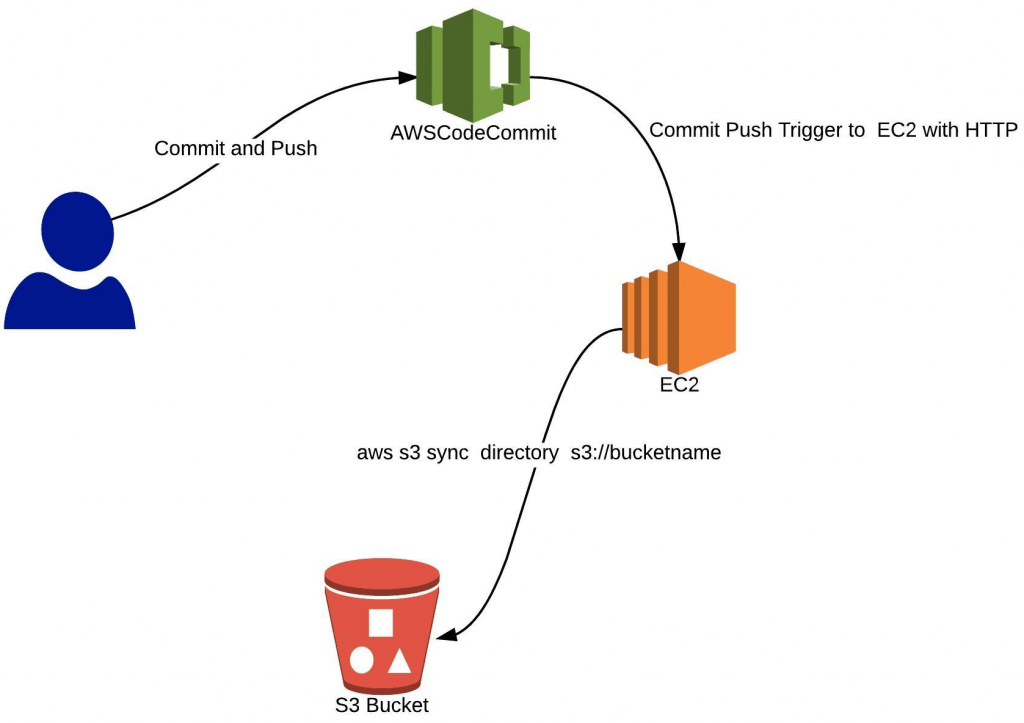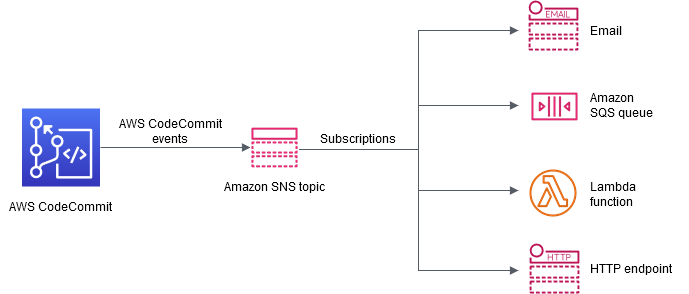
- Introduction to AWS CodeCommit
- Key Features of AWS CodeCommit
- Benefits of Using AWS CodeCommit
- How AWS CodeCommit Works
- Setting Up AWS CodeCommit
- Integrating AWS CodeCommit with Other Tools
- AWS CodeCommit vs. Other Version Control Systems
- Use Cases of AWS CodeCommit
- Security and Compliance in AWS CodeCommit
- Pricing and Cost Management
- Common Challenges and How to Overcome Them
- Conclusion
Introduction to AWS CodeCommit
Amazon Web Services (AWS) provides a fully managed source control solution called AWS CodeCommit. It enables teams to host secure and scalable private Git repositories, making it a powerful alternative to traditional version control systems like GitHub or Bitbucket. CodeCommit is designed to seamlessly integrate with other AWS services, providing a robust environment for managing code, configurations, and binaries. With built-in encryption, fine-grained access control, and integration with What is AWS IAM, CodeCommit ensures a secure, flexible platform for collaboration. Unlike traditional version control systems, AWS CodeCommit removes the need to manage your own hardware and software, offering a hassle-free experience with automatic scaling and high availability.
Key Features of AWS CodeCommit
- Fully Managed: No need to manage hardware or software. Amazon Web Services (AWS) handles scaling, maintenance, and security, freeing up your team to focus on development and innovation.
- Secure: Data is encrypted at rest and in transit. For more precise access management, it interfaces with Identity and Access Management (IAM), ensuring only authorized users can access your code.
- Scalable: Automatically scales to meet the needs of any project size AWS Engineer, from small teams to enterprise-level operations, providing flexibility as your codebase grows.
- High Availability: Designed for 99.99% availability, ensuring your repositories are accessible whenever needed, with automatic failover to prevent downtime.
- Supports Git: Fully compatible with existing Git tools, allowing easy migration from other Git repositories, making integration into your workflow smooth and hassle-free.
- Integration: Works seamlessly with AWS services like CodePipeline, CodeBuild, and CodeDeploy, creating a fully automated CI/CD pipeline for your applications.
Benefits of Using AWS CodeCommit
One of the standout benefits of AWS CodeCommit is its enhanced security. With data encryption both at rest and in transit, combined with the fine-grained access control provided by AWS Identity and Access Management (IAM), your codebase remains secure from unauthorized access, ensuring compliance with industry standards. Furthermore, AWS CodeCommit offers robust audit capabilities, allowing you to track and review every change made to your repositories. Additionally, CodeCommit is cost-effective, Reasons to Learn AWS offering a free tier for small teams and competitive pricing for larger organizations, helping you optimize your infrastructure costs. The service scales automatically with your needs, eliminating the need for manual interventions. The seamless integration with other AWS services, such as CodePipeline, CodeBuild, and CodeDeploy, allows for a streamlined development, testing, and deployment workflow, reducing the overhead of managing multiple tools and improving overall productivity. This fully managed service ensures reliability, high availability, and enhanced collaboration, empowering development teams to focus on delivering high-quality applications faster.
Are You Interested in Learning More About Cybersecurity? Sign Up For Our Cyber Security Online Training Today!
How AWS CodeCommit Works
AWS CodeCommit functions as a central, fully managed repository where developers can store, manage, and track their code changes. Here’s a detailed breakdown of the typical workflow:
- Repository Creation: First, create a new repository in the Management Console or through the AWS CLI. This repository serves as the central location for all your code, configurations, and other related files.
- Clone the Repository: Using Git commands or Git clients, clone the repository to your local machine. This gives developers a local copy of the codebase to work on, enabling offline access and version control.
- Make Changes: Modify files, add new features, AWS Applications fix bugs, or implement improvements in your local development environment. With Git, changes are tracked at every step, ensuring a history of revisions.
- Commit and Push: Once the changes are ready, commit them locally with meaningful commit messages. Afterward, push the changes to the CodeCommit repository, which is hosted on AWS, to synchronize with the remote version.
- Review and Merge: AWS CodeCommit supports pull requests, allowing teams to collaborate on changes, conduct code reviews, and ensure that the code adheres to best practices before merging it into the main branch. Merging changes through pull requests reduces the risk of bugs and conflicts.
This workflow mirrors traditional Git operations, making it easy for teams already familiar with Git to transition to CodeCommit.

Setting Up AWS CodeCommit
Setting up AWS CodeCommit is straightforward, especially for those familiar with AWS services. Follow these steps to get started:
- Sign in to AWS Console: Navigate to the CodeCommit section and ensure your account has the necessary permissions to access the CodeCommit service.
- Create a Repository: Click on “Create Repository,” name it, and provide a description to easily identify the repository’s purpose and functionality.
- Configure IAM Permissions: Ensure your IAM user has the AWS Services necessary permissions to access CodeCommit and manage repositories effectively for enhanced security and access control.
- Set Up Git Credentials: Generate HTTPS Git credentials or configure SSH keys, depending on your preferred authentication method, for secure communication with the repository.
- Clone the Repository: Use Git commands to clone the repository to your local environment, enabling you to work on your code and track changes seamlessly.
- Start Committing Code: Add, commit, and push changes as needed, ensuring that code versions are tracked and collaborative development is streamlined throughout the process.
Integrating AWS CodeCommit with Other Tools
AWS CodeCommit integrates with a wide range of tools to enhance your development workflow. You can automate your CI/CD pipeline by integrating CodeCommit with AWS CodePipeline, which helps streamline the build, test, and deployment process. For building and testing your code, AWS Course CodeBuild is a perfect match, automatically triggering builds when changes are pushed. Deployment can be handled seamlessly with AWS CodeDeploy, ensuring smooth releases to various environments. Moreover, CodeCommit is compatible with popular third-party tools like Jenkins, Atlassian, and GitKraken, allowing teams to maintain their preferred development workflows.
AWS CodeCommit vs. Other Version Control Systems
When comparing AWS CodeCommit with other version control systems like GitHub and Bitbucket, several differences stand out:
- Security: CodeCommit offers tighter integration with AWS security services, providing more robust security features.
- Scalability: Unlike GitHub or Bitbucket, CodeCommit automatically scales with your needs without manual intervention.
- Cost: CodeCommit offers a cost-effective solution, especially for teams already using AWS.
- Integration: Seamless integration with AWS Training services provides a more unified development environment.
- Enterprise Software Development: Ideal for large organizations requiring secure, scalable repositories.
- Startups and Small Teams: Cost-effective and easy to set up, perfect for smaller teams.
- DevOps Pipelines: Integrates smoothly with AWS Course CI/CD pipelines for automated builds, tests, and deployments.
- Configuration Management: Store and version control infrastructure as code (IaC) files.
- Free Tier: Includes 5 active users with unlimited repositories, allowing small teams to start without any immediate costs or commitments.
- Additional Users: After the free tier, you are charged per active user per month, making it easy to scale costs with your team’s needs.
- Storage and Data Transfer: Additional charges apply for AWS IAM storage and data transfer beyond the free limits, so it’s important to track repository size and data usage. Cost Management Tips:
- Regularly review usage to optimize costs: Regularly monitoring your usage helps identify any unnecessary resources, reducing overall costs.
- Use AWS Budgets and Cost Explorer to monitor expenses and set budget alerts: These tools provide detailed insights into spending patterns and can notify you when you approach budget thresholds.
- Consolidate repositories where possible to reduce storage costs: Consolidating repositories can help minimize redundant storage and optimize space, reducing unnecessary storage costs.
- Initial Setup Complexity: Setting up IAM roles and permissions can be complex. Use AWS documentation and tutorials to simplify the process.
- Learning Curve: Teams unfamiliar with AWS might face a learning curve. Invest in training and leverage AWS support resources.
- Integration Issues: Ensure all tools and services are properly configured to work with CodeCommit.
While GitHub and Bitbucket are widely popular and offer extensive community support, CodeCommit’s integration within the AWS ecosystem provides unmatched benefits for teams heavily invested in AWS infrastructure.
To Earn Your End to End Encryption Certification, Gain Insights From Leading End to End Encryption Experts And Advance Your Career With ACTE’s AWS Online Training Today!
Use Cases of AWS CodeCommit
CodeCommit is versatile and can be used across various industries and projects. Some common use cases include:
These use cases highlight the flexibility of CodeCommit, catering to diverse development needs from small projects to complex enterprise applications.

Security and Compliance in AWS CodeCommit
Security is a cornerstone of AWS CodeCommit. Data stored in repositories is encrypted at rest using AWS Key Management Service (KMS) and in transit using SSL. This guarantees that private data is shielded from unwanted access. Additionally, CodeCommit integrates with AWS Identity and Access Management (IAM), allowing fine-grained access control through customizable roles and policies. For monitoring and auditing, CodeCommit integrates with AWS CloudTrail and CloudWatch, providing detailed logs and activity metrics. AWS CodeCommit also meets various compliance standards, including SOC, PCI, and HIPAA, making it suitable for industries with stringent regulatory requirements.
Looking to Master AWS ? Discover the AWS Cloud Architect Masters Program Training Course Available at ACTE Now!
Pricing and Cost Management
AWS CodeCommit offers a straightforward and cost-effective pricing model:
Want to Learn About AWS? Explore Our AWS Interview Questions and Answers Featuring the Most Frequently Asked Questions in Job Interviews.
Common Challenges and How to Overcome Them
While AWS CodeCommit offers many advantages, users might encounter some challenges:
Conclusion
AWS CodeCommit is a powerful, secure, and scalable source control service that integrates seamlessly with the AWS ecosystem. Whether you are a small team or a large enterprise, CodeCommit offers a cost-effective and reliable solution for managing your code repositories. By leveraging its robust features and integrations, you can streamline your development workflow, enhance security, and improve collaboration across your teams.In summary, AWS CodeCommit stands out as an excellent choice for developers looking to harness the power of AWS while maintaining robust version control capabilities. Its security, scalability, and integration features make it a compelling option for modern software development.





